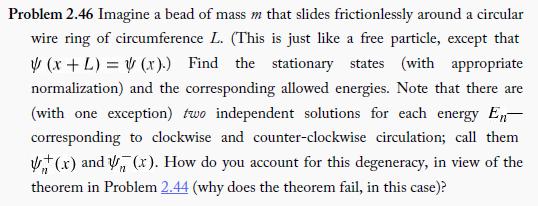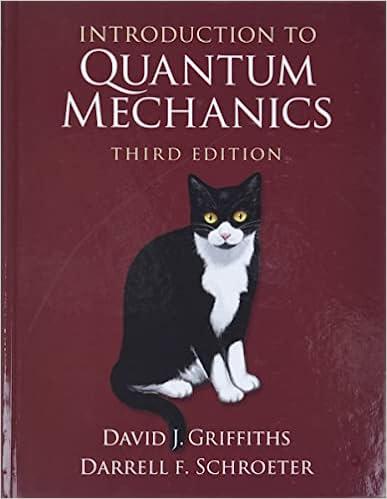Consider a particle of mass m that is free to move in a one-dimensional region of length
Question:
Consider a particle of mass m that is free to move in a one-dimensional region of length L that closes on itself (for instance, a bead that slides frictionlessly on a circular wire of circumference L, as in Problem 2.46).
(a) Show that the stationary states can be written in the form

where n = 0, ±1, ±2, … , and the allowed energies are

Notice that—with the exception of the ground state (n = 0) —these are all doubly degenerate.
(b) Now suppose we introduce the perturbation
![]()
where a << L. (This puts a little “dimple” in the potential at x = 0, as though we bent the wire slightly to make a “trap”.) Find the first-order correction to En, using Equation 7.33.
(c) What are the “good” linear combinations of Ψn and Ψ-n, for this problem? use Eq. 7.27.) Show that with these states you get the first-order correction using Equation 7.9.
(d) Find a hermitian operator A that fits the requirements of the theorem, and show that the simultaneous eigenstates of H0 and A are precisely the ones you used in (c).

Step by Step Answer:

Introduction To Quantum Mechanics
ISBN: 9781107189638
3rd Edition
Authors: David J. Griffiths, Darrell F. Schroeter





